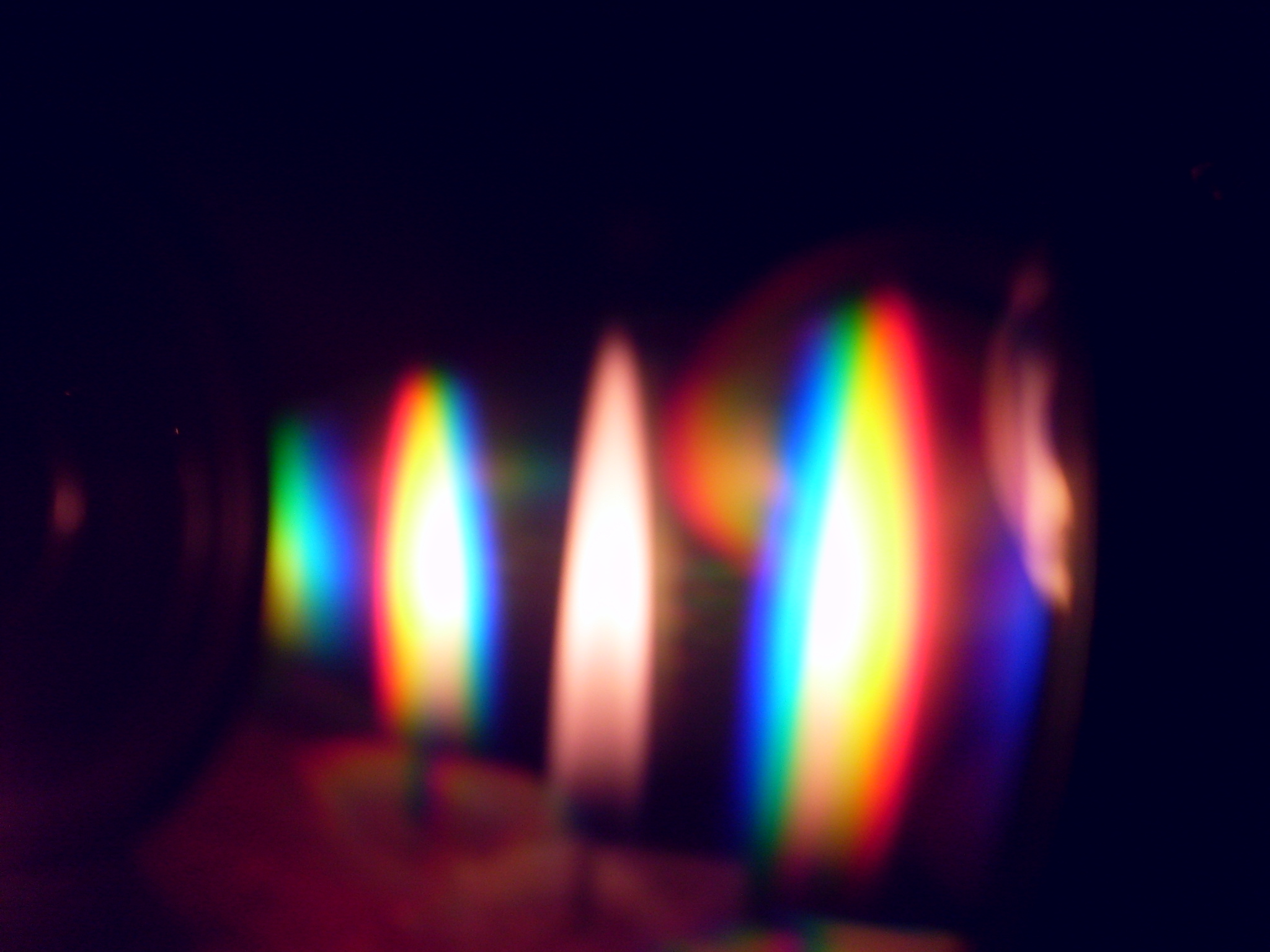Rainbow Flames
 |
This photograph displays the phenomenon of multiple reflections and diffraction of light rays off the surface of a CD held at an angle to a lit candle. The angle, at which the CD was positioned, caused rays of inflection from the candle to reflect off the surface of the CD several times. Light rays from the flame of the candle were reflected by the CD, creating a primary reflection of the white flame. This primary image was then reflected to create a secondary image. This secondary image consists of a variety of colours due to the diffraction of the reflected ray of light from the primary image that reflected yet again to create this image. The closely spaced tracks on the CD act as a diffraction grating that separates light from the flame into several beams traveling in different directions. The small distance between the tracks on the CD allowed for maximum diffraction of light. Differences in wavelength amongst the various colours of light that comprise the white flame caused each colour of light to diffract at a different angle, resulting in a colourful flame. This secondary image was reflected repeatedly, creating the other rainbow flames in the photograph.
Harprit Kaur Singh
Emery Collegiate Institute, North York, ON
Second Prize ( High School Individual Category )
Questions or comments regarding these pages may be sent to
cap@uottawa.ca